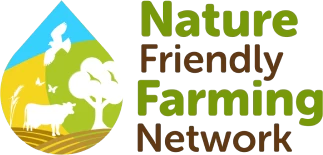In this guest blog, the Welsh Government provides an update on the Sustainable Farming Scheme Proposals and how you can have your say.
In July we published Sustainable Farming Scheme: outline proposals for 2025 our most detailed set of proposals to date on the actions we will ask Welsh farmers to undertake in future. The actions span a number of areas from improving business performance, enhancing livestock health, and improving the management of soils, habitats and woodlands. They are designed to help you and your farm prosper while addressing the challenges of changing markets and the impacts of the climate and nature emergencies.
Now we’re asking as many farmers as possible to get involved with co-design to help us ensure the proposed actions are practical and can be delivered.
The proposed actions are split into three layers:
Universal Actions – a set of actions that should be within reach of all farms to receive the Baseline Payment. There will need to be some exemptions, such as when your land type is inappropriate (for example, not everyone has peatland).
Farmers who want to go further can choose from a range of Optional Actions to receive further payments.
There will also be an opportunity for you to undertake Collaborative Actions with other farmers at a local, catchment or regional scale to deliver outcomes that cannot be delivered on a single farm.
We are now in the second phase of co-design – which includes an online survey, one-to-one interviews and group workshops. We want to speak to farmers from all sectors and farm types across Wales to help us identify which actions you are or are not able to undertake, and what support you might need to make those actions easier to deliver. Organisations, farmer groups or non-farmers can also share their thoughts with us by using this Sustainable Farming Scheme feedback form.
As part of the Universal Actions, we have proposed that every farm should include at least 10% of the farm area as semi-natural habitats (or create new habitat features if insufficient semi-natural habitat exists) and at least 10% of the farm as woodland or other tree cover.
Climate change is the greatest risk to food production over the medium to long term, and we will see an increase in floods and summer droughts over the coming years in Wales. As well as capturing carbon, and providing a home for our wildlife, these habitat and woodland areas will help control the flow of water through the landscape and trees can provide value as shade to prevent livestock suffering from heat stress, and as biosecurity barriers on farm boundaries. We want to explore with the farming industry how best to integrate extra trees and habitats as part of a thriving prosperous farm – as part of a holistic approach to improving farm resilience and profitability along with the other complementary actions.
These are actions that we are sure many nature-friendly farmers are embracing across Wales, and we would like to learn from your experience on how best to deliver these actions.
All information related to the Sustainable Farming Scheme and co-design can be found at Sustainable Farming Scheme | GOV.WALES


